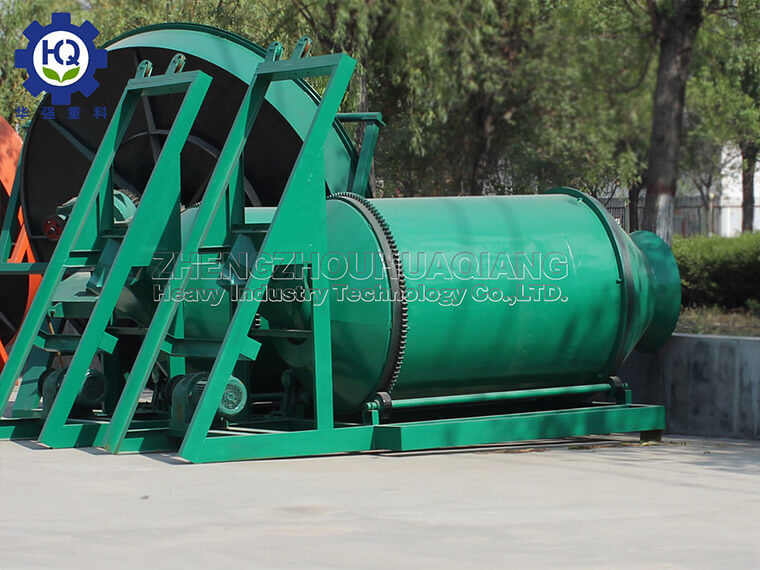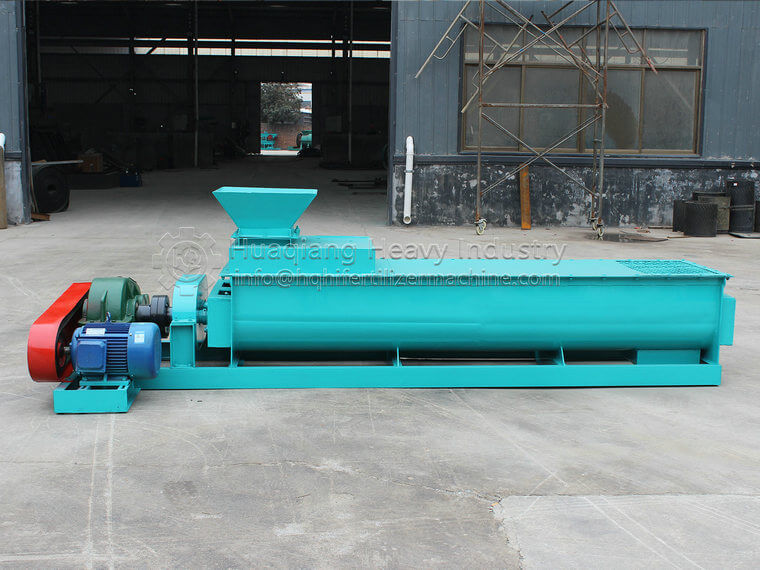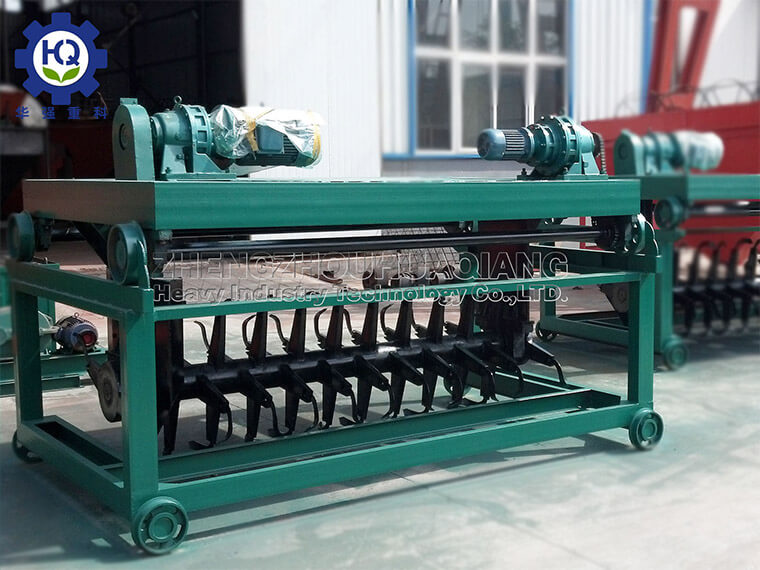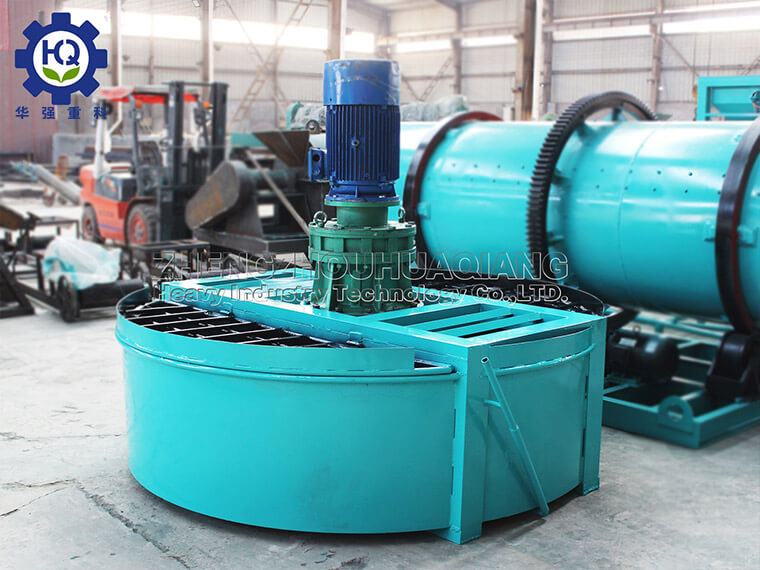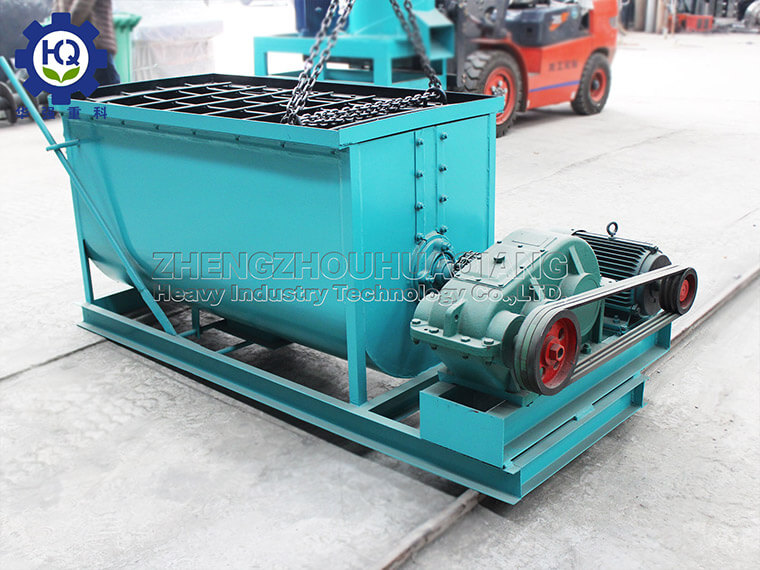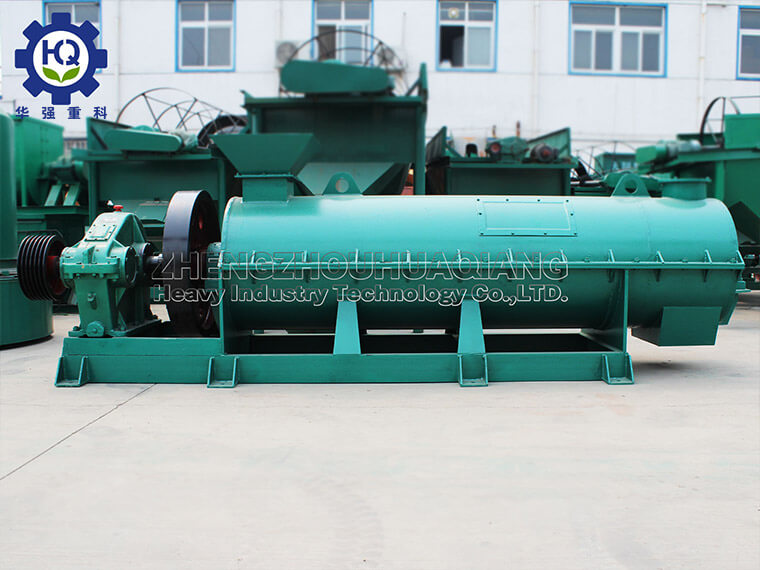The conveying principle of organic fertilizer mixer during fertilizer processing
In the working process of organic fertilizer mixer, the material conveying principle is a key link to ensure the smooth entry of raw materials into the mixing area and uniform output after mixing.
During the feeding stage, organic fertilizer mixers are usually equipped with specialized feeding devices. The common feeding methods include gravity feeding and forced feeding. Gravity feeding is suitable for materials with good fluidity, as the material naturally flows into the mixer through the feeding port from the storage container by its own gravity. In order to control the feed speed and flow rate, valves or regulating devices are usually installed at the feed inlet, and operators can adjust them according to production needs.
For some materials with high viscosity or poor fluidity, forced feeding method is used. This method forcefully pushes materials into the mixer through equipment such as screw conveyors and belt conveyors. Spiral conveyors use rotating spiral blades to push materials forward, and their conveying capacity can be controlled by adjusting the speed and diameter of the spiral blades. Belt conveyors transport materials through the movement of the conveyor belt, and the speed and width of the conveyor belt determine the amount of material transported.
Once the material enters the mixer, the mixing components begin to function, achieving efficient mixing and transportation of the material in the mixing area. The spiral blades on the mixing shaft, when rotating, will push the material in a straight line along the axial direction, enabling the material to circulate in the length direction of the mixer. At the same time, the high-speed rotation of the propeller blades generates centrifugal force, which throws the material around and forms radial flow. This axial and radial composite flow causes the material to continuously roll and mix inside the mixer, ensuring full contact and uniform distribution of various raw materials.
During the discharge stage, there is usually a discharge outlet at the bottom of the fertilizer mixer. After mixing, the material is discharged from the discharge port under the action of gravity or by the pushing of the mixing component. In order to ensure the smoothness and uniformity of the discharge, the size and shape of the discharge port have been carefully designed to avoid material blockage. Some mixers are also equipped with discharge control devices, such as valves or screw feeders, to better control the discharge speed and flow rate.
In addition, in order to improve the efficiency and quality of material transportation, some advanced organic fertilizer mixers also adopt pneumatic conveying technology. In pneumatic conveying systems, materials are transported to designated locations by the airflow generated by fans. This conveying method not only has fast speed, but also effectively avoids the layering and segregation of materials during the conveying process, especially suitable for conveying powdery or granular materials. Through these clever material conveying principles, the organic fertilizer mixer achieves efficient feeding, uniform mixing, and smooth discharge of raw materials, ensuring the smooth progress of the organic fertilizer production process.

